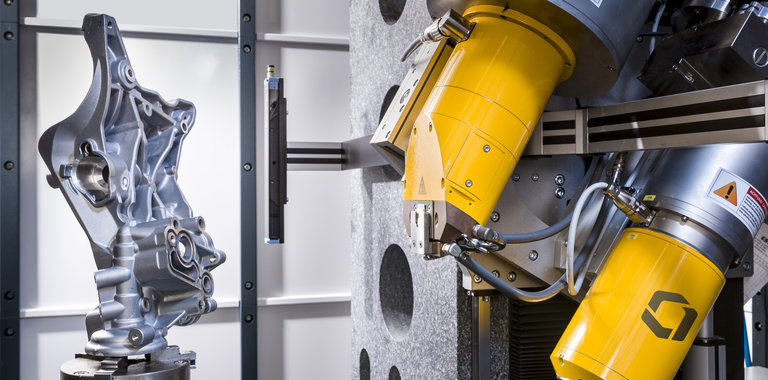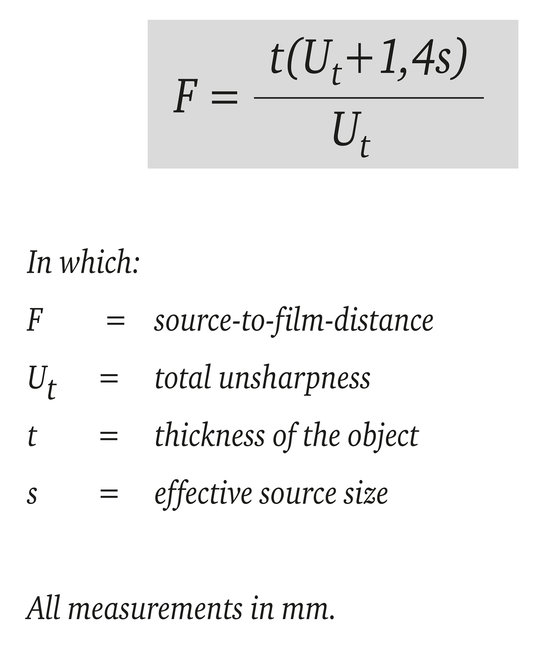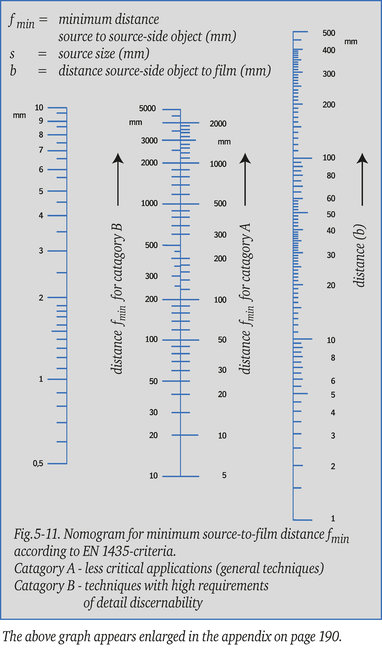
How do I calculate the source-to-film distance?
How do I calculate the source-to-film distance?
Preceding paragraphs of this chapter described the effects of geometric unsharpness and the possibility to influence this by adjusting the source-to-film distance. This section will expand on this.
To obtain a radiograph which is as sharp as possible, so as to show maximum detail, the total unsharpness should be kept to a minimum. The radiation energy level selected for making the radiograph, see chapter 9, can serve as a lead. It is, after all, determined by the thickness of the material to be radiographed, but is at the same time also responsible for film unsharpness Uf , which can be extracted from table 1-11 and or figure 4-11.
It is no use to try and keep geometric unsharpness Ug far below the value of Uf , as in that case Uf determines the total unsharpness anyhow. If the aim is to make geometric unsharpness Ug equal to the value of Uf , the source-to-film distance (F) required can be calculated from the following formula :
Instead of calculating F, various code-based procedures and guidelines provide graphs from which minimum distance (Fmin) can be determined.
Figure 5-11 shows a nomogram on the basis of EN 1435, from which the minimum focus distance for two quality levels (category A and B) can be extracted.
How do I check the development process and film archiving properties?


